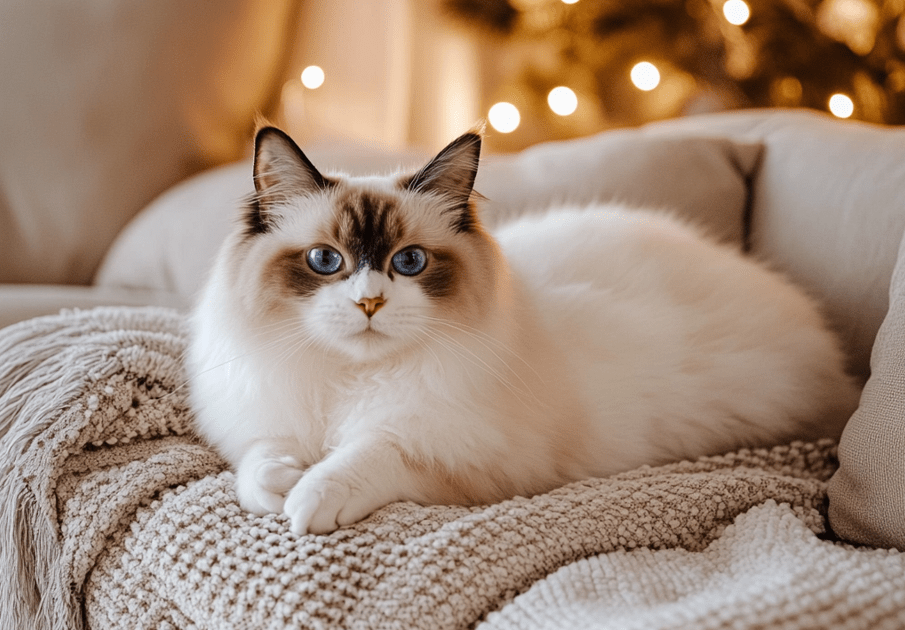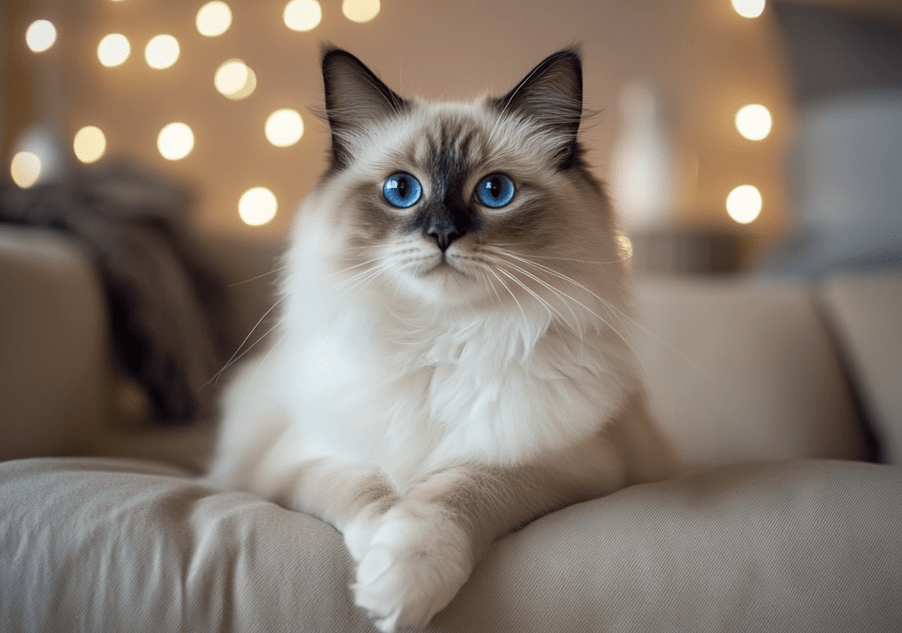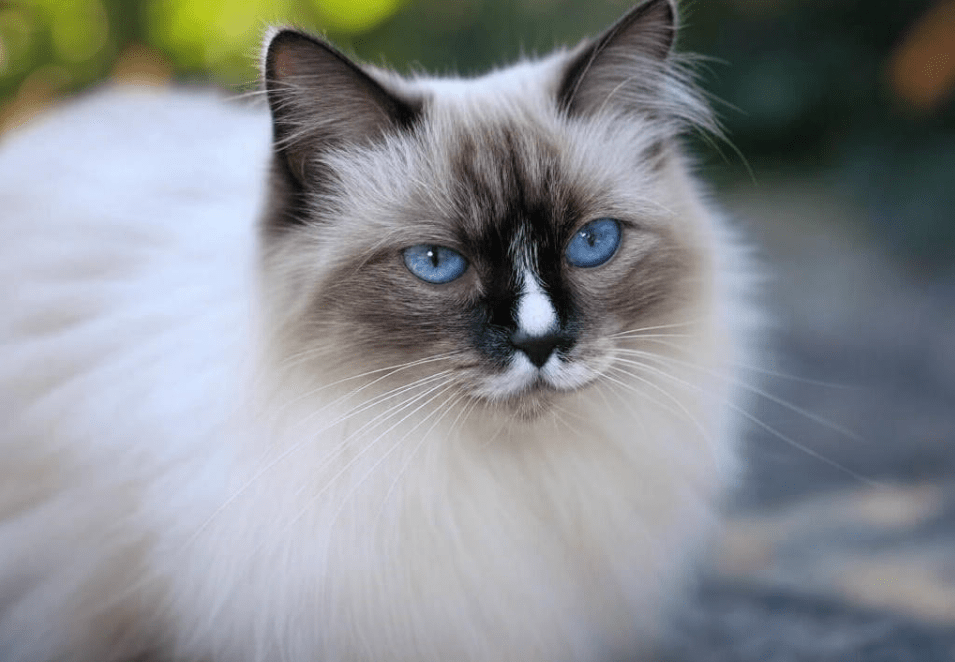
Ragdoll cats are beloved for their docile nature, striking blue eyes, and luxurious coats, but one behavior that often puzzles owners is their extensive sleeping habits. If you’ve noticed your Ragdoll cat sleeping for what seems like most of the day, you might wonder: is this normal, or should you be concerned? Understanding Ragdoll cat sleep patterns is key to ensuring your feline friend is healthy and happy. In this comprehensive guide, we’ll explore why Ragdoll cats sleep so much, what’s normal, when to worry, and how to support their well-being.
Understanding Ragdoll Cat Sleep Patterns
Ragdoll cats, like all felines, are known for their love of sleep. On average, cats sleep between 12 and 16 hours per day, with some sleeping up to 20 hours, especially kittens, seniors, or particularly relaxed breeds like Ragdolls. The Ragdoll’s laid-back personality, often described as “puppy-like,” contributes to their tendency to lounge and nap frequently. Their calm demeanor makes them less likely to engage in high-energy activities compared to more active breeds like the Bengal or Abyssinian.
Why Do Cats Sleep So Much?
Cats are crepuscular animals, meaning they are most active during dawn and dusk. This evolutionary trait stems from their wild ancestors, who conserved energy during the day to hunt at twilight. For domestic Ragdolls, this translates into long periods of rest interspersed with bursts of play or exploration. Sleep also plays a critical role in their physical and mental health, allowing their bodies to repair tissues, process experiences, and maintain a strong immune system.
Ragdoll-Specific Traits
Ragdolls are a large, semi-longhaired breed with a gentle temperament, often going limp when picked up—hence their name. This relaxed disposition extends to their sleeping habits. Unlike high-strung breeds, Ragdolls are content to sprawl out on a cozy blanket or your lap for hours. Their size and metabolism also influence their sleep needs, as larger cats may require more rest to support their body’s energy demands.
Normal Sleep Behaviors in Ragdoll Cats
To determine whether your Ragdoll’s sleep is normal, it’s helpful to understand typical feline sleep behaviors and how they manifest in this breed.
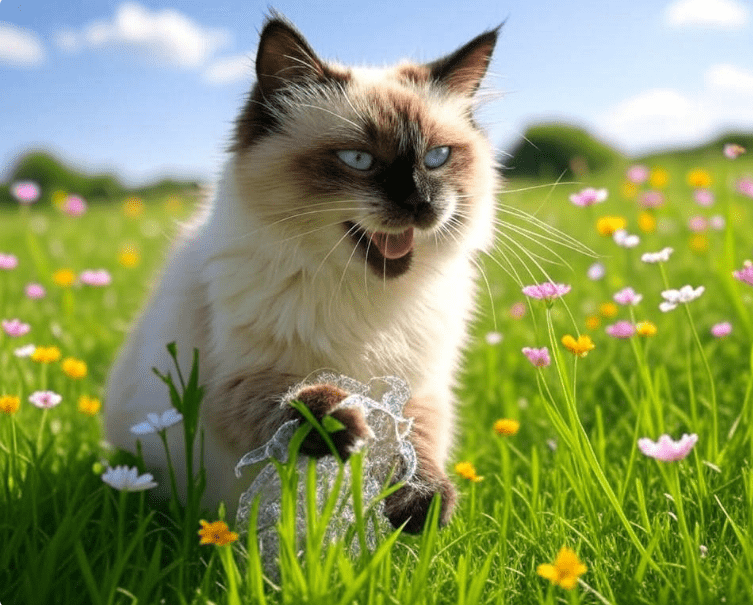
Types of Cat Sleep
Cats experience two main types of sleep: catnaps (short, light dozes) and deep sleep (longer, restorative periods). Ragdolls are masters of the catnap, often seen lounging with half-closed eyes, ready to spring into action if a toy or treat appears. Deep sleep, where they may curl up in a ball or stretch out fully, is essential for their overall health.
Common Sleeping Spots
Ragdolls are notorious for choosing cozy, warm, and sometimes quirky sleeping spots. You might find your Ragdoll napping on:
Sunny windowsills: The warmth of the sun is irresistible.
Your bed or furniture: Ragdolls love soft surfaces and being close to their owners.
High perches: Cat trees or shelves provide a safe vantage point.
Hidden nooks: Cardboard boxes or under furniture offer a sense of security.
Daily Sleep Routine
A typical day for a Ragdoll might involve several catnaps, a few play sessions, eating, grooming, and longer sleep periods at night or during the afternoon. Kittens and senior Ragdolls tend to sleep more than healthy adults, as their bodies require extra rest for growth or recovery.
Factors Influencing Ragdoll Cat Sleep
Several factors can affect how much your Ragdoll sleeps, from their age to their environment. Let’s explore these in detail.
Age
Kittens: Ragdoll kittens sleep up to 20 hours a day as their bodies grow and develop. Frequent naps fuel their rapid growth and high energy levels during playtime.
Adults: Healthy adult Ragdolls (1–7 years) typically sleep 12–16 hours, balancing rest with play and social interaction.
Seniors: Older Ragdolls (8+ years) may sleep more due to reduced energy levels, joint stiffness, or age-related health issues.
Diet and Nutrition
A balanced diet supports healthy sleep patterns. Poor nutrition or irregular feeding schedules can disrupt your Ragdoll’s energy levels, leading to excessive lethargy or restlessness. High-quality cat food tailored to their age, size, and activity level ensures they have the energy to play and the ability to rest well.
Environment
Ragdolls thrive in calm, enriched environments. A stressful household—due to loud noises, frequent visitors, or other pets—can cause your cat to sleep more as a coping mechanism. Conversely, a lack of stimulation (e.g., no toys or scratching posts) may lead to boredom-induced napping.
Activity Level
While Ragdolls aren’t as high-energy as some breeds, they still need regular play to stay healthy. Insufficient exercise can result in longer sleep periods, as your cat conserves energy. Interactive toys, laser pointers, and feather wands can encourage activity.
Health and Medical Conditions
Certain health issues can cause excessive sleep or lethargy. We’ll cover these in the “When to Be Concerned” section below.
Is My Ragdoll’s Sleep Normal?
If your Ragdoll is sleeping within the 12–20-hour range, eating normally, playing occasionally, and showing no signs of distress, their sleep is likely normal. To assess this, observe:
Consistency: Does their sleep pattern align with their usual routine?
Energy Levels: Are they alert and engaged during awake periods?
Appetite and Hydration: Are they eating and drinking normally?
Grooming: Do they maintain their coat’s cleanliness?
If these factors are stable, your Ragdoll’s sleep is probably just a reflection of their relaxed nature.
When to Be Concerned About Your Ragdoll’s Sleep
While Ragdolls naturally sleep a lot, excessive or abnormal sleep can signal underlying issues. Here are red flags to watch for:
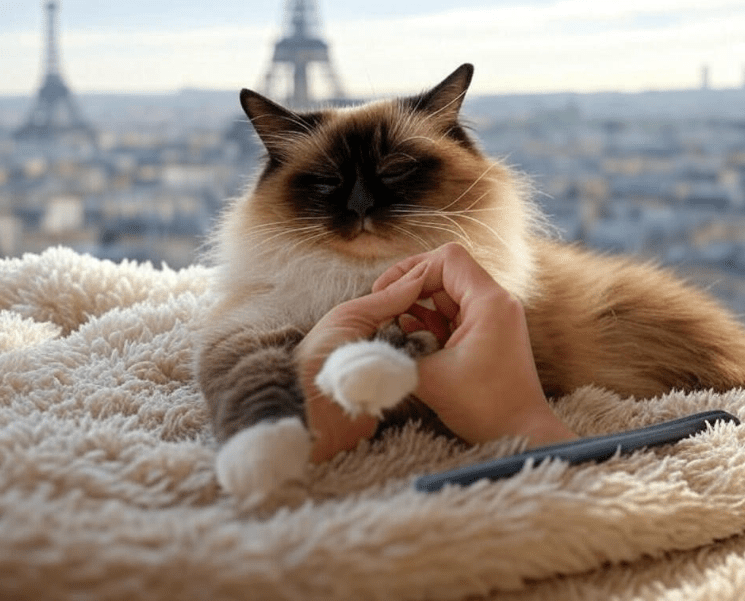
Signs of Excessive Sleep
Lethargy: Your cat seems too tired to play or interact, even during their active periods.
Sudden Changes: A previously active Ragdoll starts sleeping significantly more.
Unusual Postures: Sleeping in odd positions, like hunching or avoiding favorite spots, may indicate discomfort.
Lack of Response: Your cat doesn’t react to stimuli like food, toys, or your voice.
Health Issues That Cause Excessive Sleep
Several medical conditions can lead to increased sleep or lethargy in Ragdolls. These include:
Obesity: Ragdolls are prone to weight gain, which can reduce energy levels and increase sleep. Regular weigh-ins and a controlled diet can help.
Hypothyroidism: A sluggish thyroid can cause fatigue and excessive sleep. Blood tests can diagnose this condition.
Anemia: Low red blood cell counts reduce oxygen delivery, leading to tiredness. Pale gums or weakness are signs to watch for.
Heart Disease: Ragdolls are at risk for hypertrophic cardiomyopathy (HCM), which can cause lethargy and breathing difficulties.
Infections or Pain: Dental issues, urinary tract infections, or arthritis can make your cat sleep more to cope with discomfort.
Depression or Stress: Changes like moving, losing a companion, or a new pet can cause emotional distress, leading to excessive sleep.
When to Contact a Veterinarian
If your Ragdoll shows any of the following, consult a vet promptly:
1.Sleeping more than 20 hours daily with no play or interaction.
2.Loss of appetite, vomiting, or diarrhea.
3.Difficulty breathing, limping, or signs of pain.
4.Unexplained weight loss or gain.
5.Changes in litter box habits, like straining or not urinating.
A vet may perform blood tests, X-rays, or ultrasounds to diagnose the issue. Early intervention is critical, especially for breed-specific conditions like HCM.
How to Support Healthy Sleep in Your Ragdoll

To ensure your Ragdoll’s sleep is healthy and balanced, consider these tips:
Provide a Comfortable Sleep Environment
Cozy Beds: Offer soft, washable cat beds in quiet areas.
Warm Spots: Place beds near windows or use heated pet mats (safely).
Safe Spaces: Ensure they have access to high perches or hiding spots for security.
Encourage Physical Activity
Daily Play: Engage your Ragdoll with toys for 15–30 minutes daily to stimulate their mind and body.
Enrichment: Provide scratching posts, puzzle feeders, and rotating toys to prevent boredom.
Companionship: Ragdolls are social, so spend quality time with them to boost their mood.
Maintain a Healthy Diet
1.Feed high-quality, protein-rich cat food appropriate for their age and weight.
2.Stick to a consistent feeding schedule to regulate energy levels.
3.Ensure fresh water is always available to prevent dehydration.
Monitor Their Health
1.Schedule annual vet checkups to catch issues early, especially for HCM screening.
2.Keep up with vaccinations, flea control, and dental care.
3.Weigh your Ragdoll monthly to monitor for obesity.
Reduce Stress
1.Maintain a predictable routine for feeding, play, and cuddle time.
2.Introduce changes (e.g., new pets or furniture) gradually.
3.Use pheromone diffusers like Feliway to create a calming environment.
Fun Facts About Ragdoll Cat Sleep
Dreaming: Ragdolls often twitch or “run” in their sleep, indicating they’re dreaming, especially during REM sleep.
Temperature Sensitivity: Their love for warm spots stems from their semi-long coats, which make them seek heat.
Social Sleepers: Ragdolls may sleep near or on their owners to strengthen their bond.
Conclusion
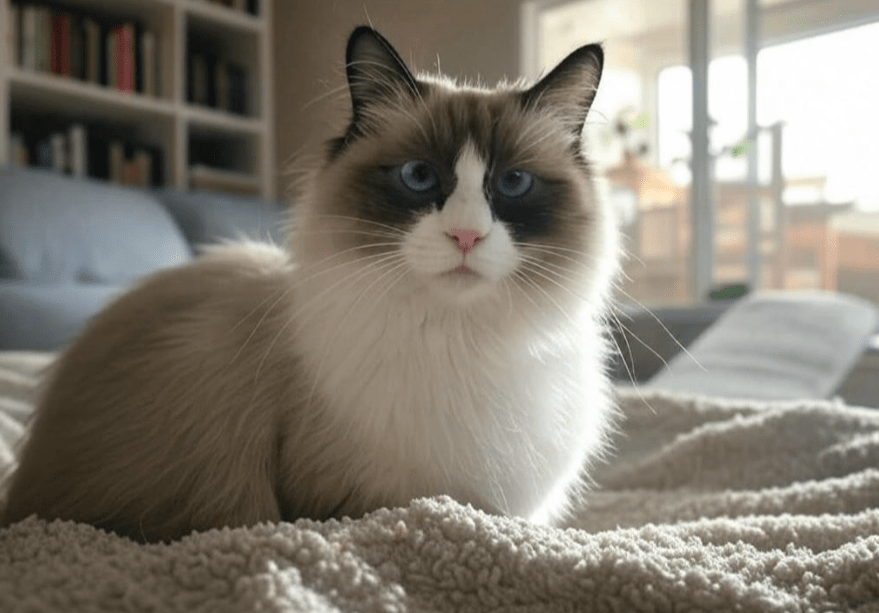
Your Ragdoll cat’s love for sleep is usually a normal part of their charming, laid-back personality. By understanding their natural sleep patterns, monitoring for signs of concern, and providing a supportive environment, you can ensure their naps are healthy and restorative. Most Ragdolls sleep 12–20 hours a day, influenced by their age, diet, activity, and environment. However, sudden changes or excessive lethargy warrant a vet visit to rule out health issues like obesity, heart disease, or stress.
With proper care, your Ragdoll will continue to grace your home with their serene presence, snoozing contentedly between moments of play and affection. If you’re ever in doubt about your Ragdoll’s sleep habits, trust your instincts and consult a veterinarian for peace of mind.


